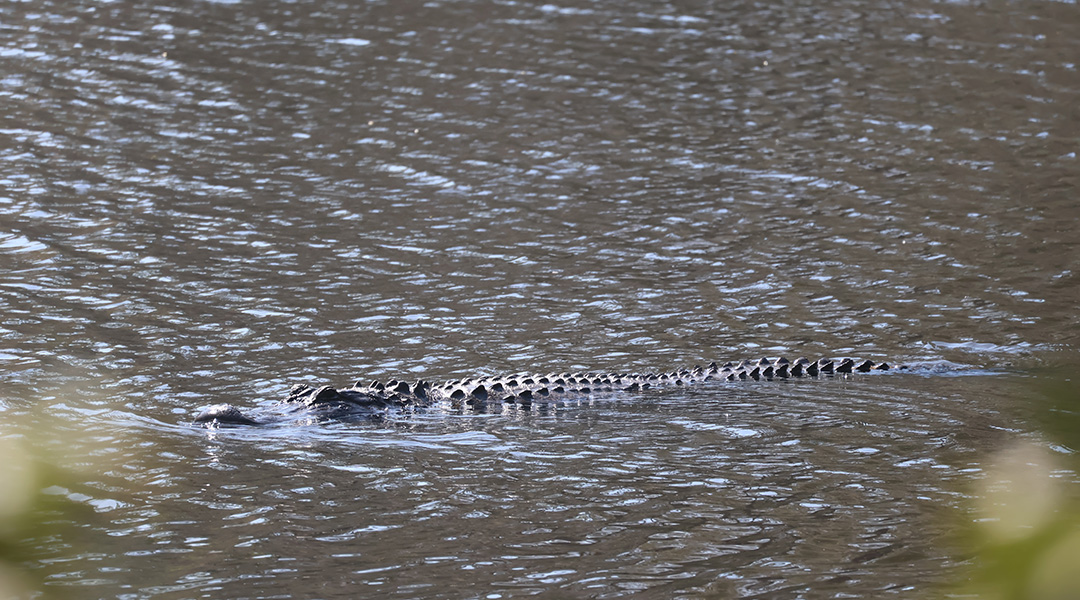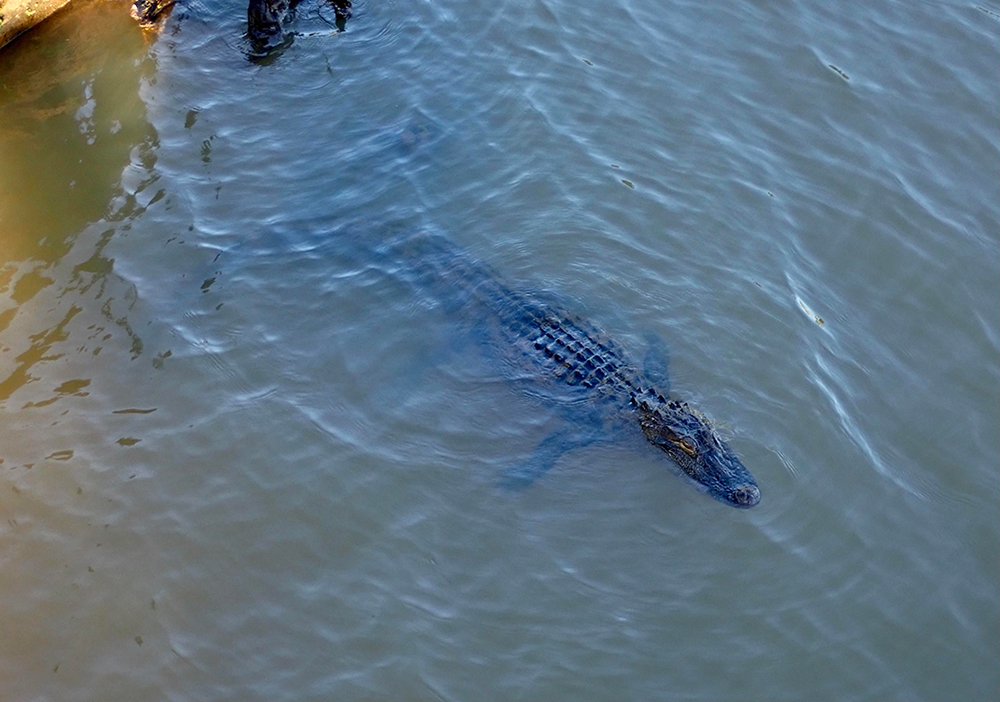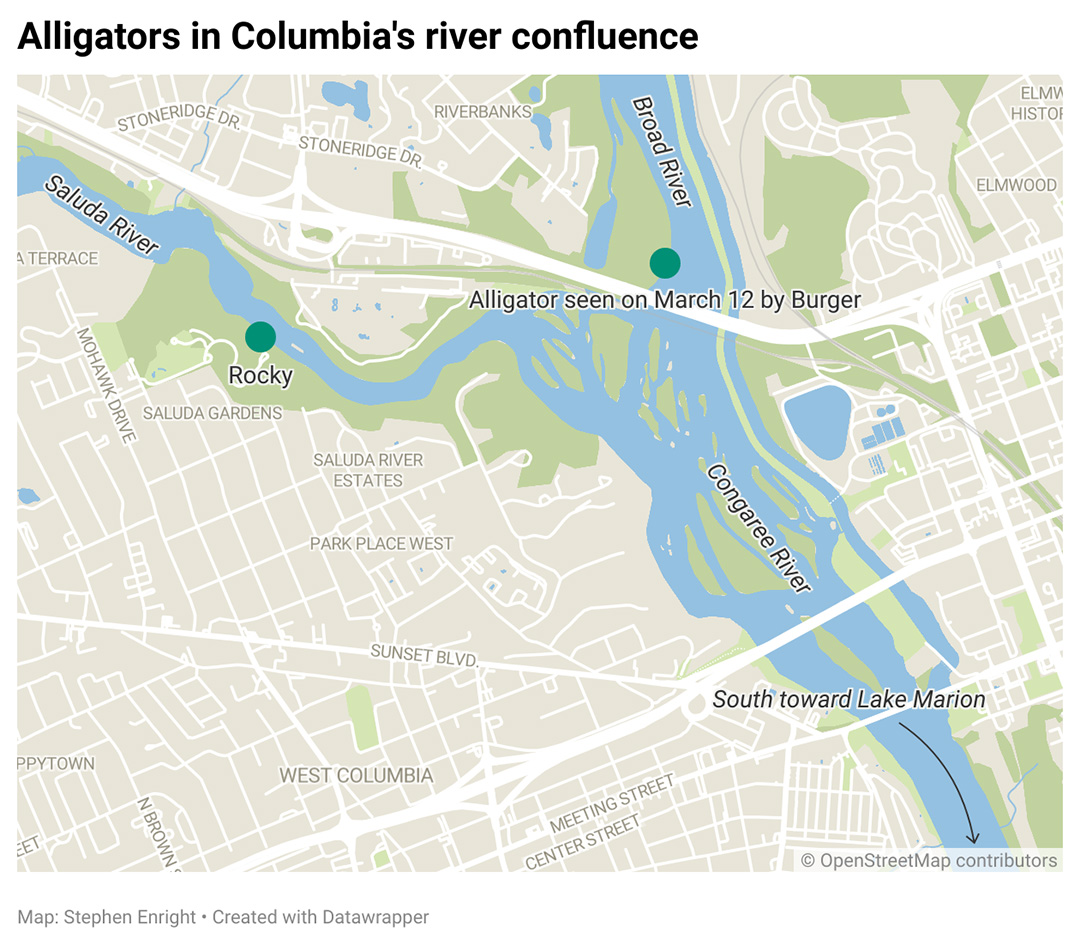The American Alligator migrated to Lake Marion shortly after the man-made lake was built in the 1940s. (Photo by Stephen Enright/Carolina News and Reporter)
Midlands residents are all too familiar with the ills of spring this week: pollen-covered cars, balmy afternoons and the offensive odor of the Bradford pear.
Those who ignore their allergies and bask in spring weather on Columbia’s riverwalks may be met with another spring staple: alligators.
“Alligators have always been a permanent fixture in the greater Columbia area,” said Chris Spearen, a park ranger at Columbia Riverfront Park.
Most alligators aren’t permanent residents in Columbia’s rivers and canals. They migrate as the weather warms.
South Carolina’s alligator population has been dormant since November. Through a process called brumation, the cold-blooded reptile slows its metabolism to a crawl. They hold their breath over two-day periods and lower their heartbeats to two beats per minute to conserve energy.
Many alligators in the Midlands live at Lake Marion in Santee State Park – more than an hour downstream from the riverwalks in Columbia.
Alligators travel upstream toward Columbia for food and mating.
Matthew Smith, a park ranger at Santee State Park, said he expects alligators to move upstream in greater numbers after May.
“We’ve had a couple of days peaking up there around probably 70, 75 (degrees),” Smith said. “Not only are (the alligators) becoming more active, they are starting to look for food sources … to start getting some of that energy they lost over the winter.”
Alligators have already been spotted on the Columbia’s riverwalk this year.
Kathryn Fenner, who walks on the riverwalk every morning with her husband and their dog, has seen alligators but hasn’t had a run-in with one.
Columbia resident Taylor Burger saw one last Tuesday.
“I had seen the sign about the alligators and I thought it was funny because I had never even thought there were actually alligators in that area,” Burger said. “But, it turns out … he was there.”
She might have seen Rocky, a 5-foot fixture on the riverfront over the past few years.
His consistent schedule makes him easy to find.
“He has a very, very routine route along the canal,” Spearen said. “On sunny days, when it’s in the 70s, you’ll see him cruising up around the canal, typically where the pedestrian bridge going up to Greystone Boulevard is, is where he hangs out.”
Like most alligators, Rocky has a natural fear of humans and prefers to keep his distance.
“You might hear stories, but there’s never been a single documented attack on a human being here in the Midlands of South Carolina – ever,” Spearen said.
There have been 13 recorded attacks on people statewide since 1948, only two of which were fatal, according to the University of Georgia’s Savannah River Ecology Lab.
Spearen and Smith said such incidents happened because alligators had lost their fear of humans after being fed.
“If they get used to people, and they’ve been fed, and then they come up to a person,” Smith said. “They’re looking for food and (if people) don’t have it, they tend to get aggressive.”
Those who feed alligators in South Carolina may be fined up to $200 or face 30 days in prison.
Oftentimes, humans – not alligators – are the aggressors.
“The only issue we’ve ever had is with people throwing rocks at them,” Spearen said. “Literally, that’s it.”
Whether an alligator is spotted or not, staying at least 10 feet from the bank is recommended, according to the South Carolina Department of Natural Resources.
“It’s a wild animal. We’re in its home,” Smith said. “So we need to give it the space and respect it deserves.”
For the protection of alligators and people, any interaction with alligators is strictly prohibited by the S.C. Department of Natural Resources. (Photo by Stephen Enright/Carolina News and Reporter)
Alligators are a common sight along riverbanks in Columbia but most avoid interaction with people. (Photo courtesy of Kathryn Fenner/Carolina News and Reporter)
The Congaree River, which flows into the Congaree National Park and then Lake Marion, forms from the confluence of the Broad and Saluda rivers.





